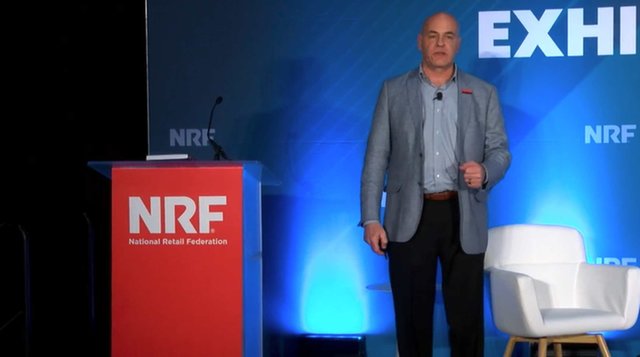
Retail Marketplace Monetization: How Marketplace 2.0 Maximizes Profits
In an era where digital marketplaces are reshaping the retail landscape, Tom McFadyen, CEO of McFadyen Digital, shared invaluable insights during a pivotal session on retail marketplace monetization. Drawing on his vast experience and the expertise of McFadyen Digital's team of 250 marketplace experts, Tom outlined a comprehensive roadmap for leveraging marketplace 2.0 business models to maximize profits. His discussion was a beacon for retailers navigating the complex terrain of online commerce, emphasizing innovative monetization strategies that are crucial for success in today's competitive market.
Produced by


Play Video

The Evolution of Marketplace Monetization
Tom began by delineating the transition from the simplistic commission-based models of Marketplace 1.0 to the multifaceted monetization strategies of Marketplace 2.0. He underscored the importance of a diversified revenue stream, stating, "You need to create a strategy to select the tools you're going to use which business models are going to make work make sense for your business and then tune them adjust the levers the inputs that go into the results of your model." This approach not only reduces volatility but also fortifies a business against competitors by building a moat around it.
Instacart: A Paradigm of Success
A key highlight of Tom’s talk was the deep dive into Instacart's marketplace model, which employs nine distinct monetization models ranging from transaction fees and commissions to subscription services and retail media opportunities. Tom applauded Instacart's strategy, noting its remarkable growth to $30 billion in sales within 12 years and a market cap of $7 billion. This example served as a testament to the efficacy of embracing diverse revenue channels.
Amazon and Alibaba: Diverse Models, Unified Success
Amazon and Alibaba's strategies were spotlighted to illustrate the spectrum of monetization strategies at play in the global marketplace. Tom detailed how Amazon leverages marketplace fees, advertising, and subscription services to diversify its income, highlighting that "on the average transaction on Amazon, half of the money that you spend to purchase something from a third-party seller goes to Amazon." In contrast, Alibaba's model eschews commissions in favor of mandatory subscription fees, demonstrating a different approach to securing revenue while managing platform leakage.
Monetization Beyond Commissions
The session went beyond the conventional commission structures to explore fees, retail media, embedded finance, and cross-border commerce as avenues for marketplace monetization. McFadyen shed light on how marketplaces can derive substantial profit from retail media, projected to reach $175 billion by 2028, and the burgeoning field of embedded finance. Furthermore, the anticipated growth of cross-border e-commerce to $1 trillion by 2030 underscores the vast potential for marketplaces to tap into international markets.
Operational Efficiency and Financial Ingenuity
Tom emphasized that marketplace models not only offer numerous revenue streams but also present opportunities to significantly reduce CapEx and OpEx costs. He detailed how marketplaces, by their nature, are asset-light models that can diminish the need for substantial investments in inventory, fulfillment, and physical infrastructure. This operational efficiency, coupled with strategic financial models, forms a robust foundation for profitability and scalability.
Actionable Strategies for Retailers
The talk concluded with actionable strategies for retailers aiming to harness the power of marketplace monetization. Tom urged attendees to map their marketplace goals to the plethora of monetization models available, select an optimal mix of tools and models for their marketplaces, and continuously optimize these choices based on performance metrics and market dynamics. He stressed the importance of revenue diversification and the strategic advantage of building a competitive moat through innovative monetization strategies.
A Blueprint for Retail Marketplace Success
Tom McFadyen's presentation was more than a mere overview of marketplace monetization; it was a clarion call to retailers to innovate, diversify, and strategically position their marketplaces for unprecedented growth. By sharing real-world examples, actionable insights, and a roadmap for leveraging marketplace 2.0 models, Tom provided attendees with a blueprint for navigating the complexities of digital commerce and seizing the opportunities of tomorrow's retail landscape.







